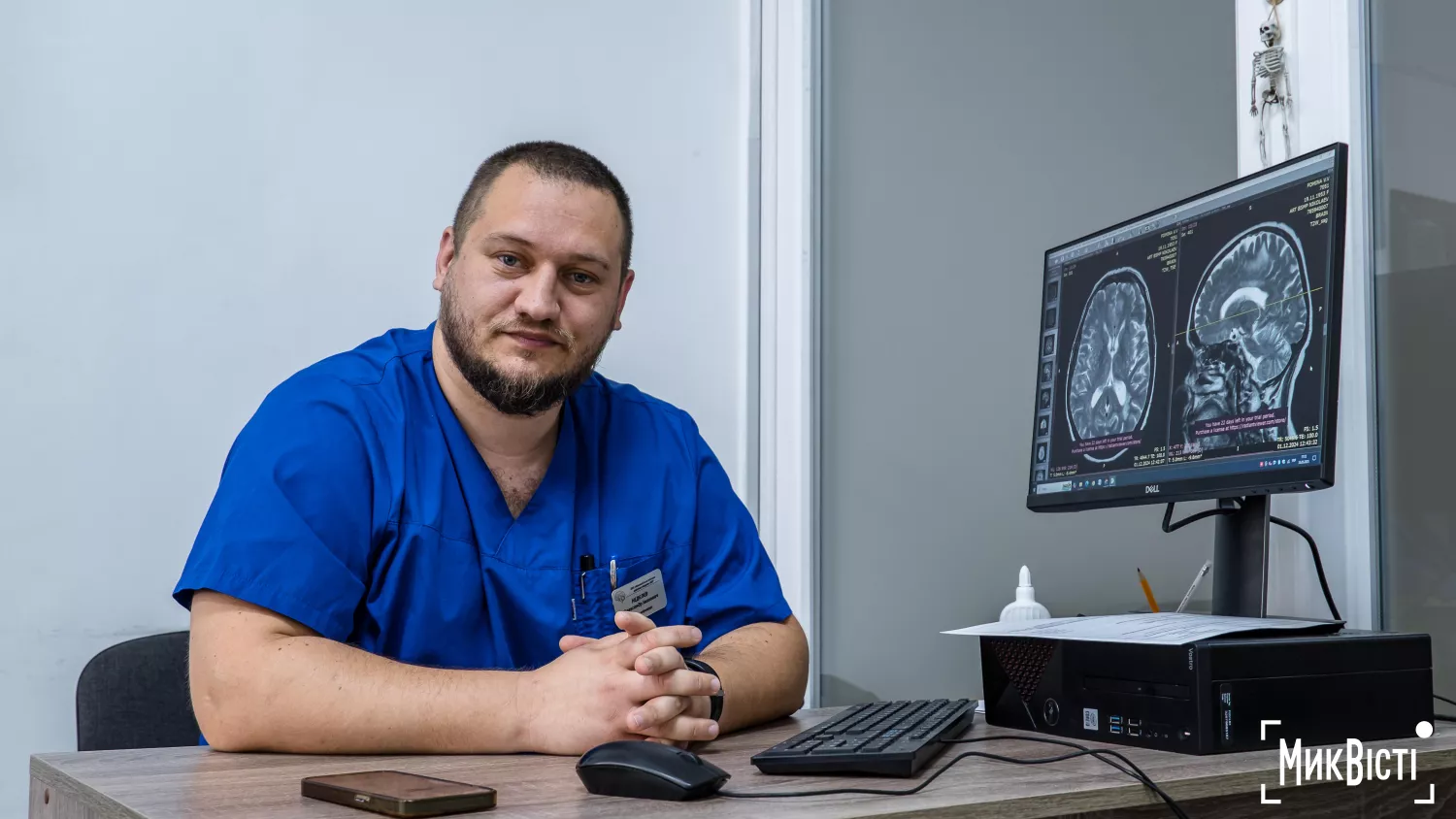«Stroke has become very «younger»: a neurosurgeon from Mykolaiv said that in recent years more young people have been suffering from stroke
- Yuliia Boichenko
-
•
-
10:00, 31 May, 2025
Since the beginning of the full-scale war, more young people have been seeking treatment for stroke in Mykolaiv hospitals.
Oleksandr Nedieliev, a neurosurgeon at the Mykolaiv Regional Clinical Hospital, told NikVesti.
«The number of strokes has certainly increased, first of all. And secondly, stroke victims have become much younger in age. Just a few days ago, a guy born in 1997 (27 years old, — note) with a stroke two years ago came to my consultation,» said Oleksandr Nedieliev.
The neurosurgeon advised him to undergo an examination to eliminate the risk of stroke in the future.
«So start literally from the beginning. Do a CT scan of the head, do an MRI of the head, find out if there are any problems. And if a person still has a history of any problems in relatives, then it is 100% necessary to see a doctor and be gradually examined,» explained Oleksandr Nedieliev.
As a reminder, Mykolaiv Regional Clinical Hospital has started diagnosing the cause of ischaemic stroke. Doctors can help patients in the first 4-6 hours after the first symptoms appear.
What is an ischaemic stroke and why is it dangerous?
An ischaemic stroke occurs when the blood supply to a certain part of the brain is cut off due to a blood clot or embolus blocking the vessel. This leads to oxygen deprivation and neuronal death. The sooner a patient receives help, the better their chances of recovery.
Key facts:
- Ischaemic strokes account for up to 80% of all strokes.
- The critical window for treatment is the first 4-6 hours after the onset of symptoms.
- Symptoms: sudden numbness of the face or limbs, speech impairment, loss of coordination.
Cerebral angiography: how to diagnose the condition of brain vessels
Cerebral angiography is a method of visualising the vessels of the brain using X-rays and contrast medium. It allows detecting a blood clot, aneurysm or other circulatory disorders.
Why angiography is performed:
- To accurately determine the location of the vessel blockage in an ischaemic stroke.
- To prepare for thrombectomy — removal of a blood clot.
- To diagnose aneurysms, arteriovenous malformations and other pathologies.
